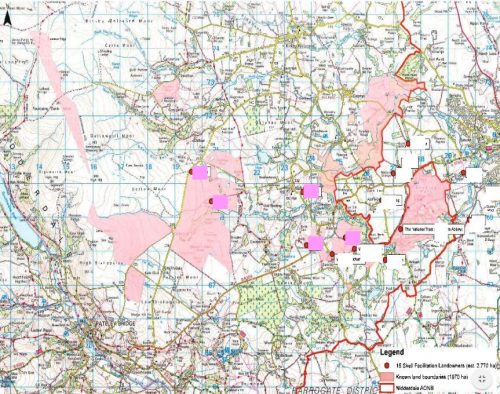Ref: CSFF030010
Lead: Julian Carlisle, julian.carlisle@nationaltrust.org.uk
Group members: 16
Length of agreement: 3
Area of group (Hectares): 6456
A specific priority for the Pennine Dales Fringe is the creation of a buffer zone around the World Heritage Site by enhancing habitats to benefit biodiversity, historic environment, water quality and wider landscape character.
The partnership will deliver on this by:
a) Water : The partnerships priority is to modify the hydrology of the Skell to mitigate the impact of flooding and reduce sedimentation by providing landowners and managers with the training needed to implement Natural Flood Management like tree and hedge planting, improved management of existing woodlands, in-channel measures such as woody debris dams, soil management and appropriate grazing regimes. We will complement existing initiatives by the Nidd CSF programme, Yorkshire Dales Rivers Trust and Environment Agency
b) Priority habitats: – Facilitating development of woodland management plans to identify ways of increasing profitability and enhancing their potential for biodiversity and landscape. The plans will also show how management of existing woodland (including extensive areas of PAWS) can be adapted to slow the flow and reduce sediment input;
– Helping the partnership produce a plan of locations where new woodland can join fragmented habitats together and mitigate flooding and sedimentation simultaneously;
– Highlighting sites in the catchment where management can be adapted to enhance habitats for wild bird populations that have been recorded in the project area (lapwing, curlew, lesser spotted woodpecker, hawfinch, redstart, pied & spotted flycatcher and wood warbler)
c) Historic Environment: The partnership will highlight links between the World Heritage Site and the wider catchment and identify undesignated features of the historic environment associated with Fountains including the Aislabie -designed bridge and the remains of the former Spa building in Spa Gill Wood. We will deliver training events and demonstrations to encourage other landowners and managers in the catchment to understand the significance of historic environment features on their holdings.

